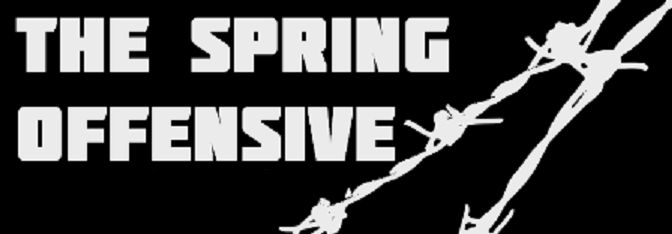Well, my next few days will be taken up with painting these two Grenadiers. Both were rescue jobs and I got to thinking, perhaps people might be interested in my methods of salvaging models.
First up, the Grenadier Watchmaster below is from the Grenadier Centaur kit. I decided I liked him as a stand alone sergeant as he looks like he is beckoning his forces forward. I began by stripping the model in a mix of dettol and water. Dettol is a range of products available in the UK. I believe the active ingredient is Chloroxylenol. I leave the models in the solution for no more than about 3-4hrs then go at them with a toothbrush. Now, you have reduced the model to the initial resin and in some places a small amount of the undercoat.
Next, you need to leave the model to fully dry, resin is somewhat porous and seems to take up the mixture you will find that it will take 24-36hrs to dry out. Now the issue is, that small, thin components often warp irreversibly. In the case of the Watchmaster, the finger guard on the chainsword warped and broke while scrubbing, and some of the rivets sheared off. You can see rivets replaced on the two lower gut-armour plates (.5mm styrene rod) and the finger guard replaced with a small piece of strip styrene.
Another example is the command squad Vox user shown below.
His rifle had warped and sagged. So carefully removing the rifle from the front-of-fist I then drilled a small (.5mm) hole into the fist. I then compared the warped gun to a seperate one and made a best-guess cut across the stock, then drilled a reciprocal hole and glued the gun into position with superglue and a short of brass rod.
Yet again, the commander, below had a sword, which of course warped awfully. So, removing his hand and the sword, I replaced the whole hand with a spare sword I took from a Commissar model (there is a one with a sword and pistol hand included in the pack) and turned the sword a little just for a bit of variety.
In terms of fixing up and cleaning resin models, stripped or not, here are two methods I use. The first can be seen on the grenadier to the left.
I cleaned up the model as usual, with files and a knife. I then primed the model and looked again, when primed, flaws often become more visible, so, by using the following tools (and thus method 2) a finer finish can be achieved;
Fine grade steel wool;
Fine grade wet and dry sandpaper;
Liquid green stuff (LGS), green stuff, superglue and nylon brush.
Using the sandpaper sharp edges can be easily removed. Forgeworld resin often has some sharp or rough edges which look unsightly when painted. A gentle rub with the sandpaper will take these away. For surfacing flaws, the steel wool, rolled into a ball can be rubbed all over flat surfaces to even them out. For deeper surface flaws, LGS followed by this steel wool treatment can do it.
The nylon brush is useful for rubbing away hanging particles or dusting off the model. An example of LGS and steel wool treatment is shown below.
As you can see, where the green matter has remained was obviously a surfacing flaw, as the steel wool has smoothed out its surface and the surrounding area. For any Krieg collectors the following areas tend to have flaws;
Helmet rims, jacket cuffs, coat turn ups, breathing apparatus and leg wrappings.
Hope that is of some help.
Am going to start painting the two grenadiers this afternoon - I have worked out that according to the IAvol.5 a squad of grenadiers can consist of one Watchmaster, a heavy flamer team and two meltaguns. I already have the two salvaged (Watchmaster and meltagunner) so I might perhaps buy the heavy flamer team and other special weapons team on Friday. The heavy stubber from the kit will be kept for the ten man squad of Grenadiers.










No comments:
Post a Comment